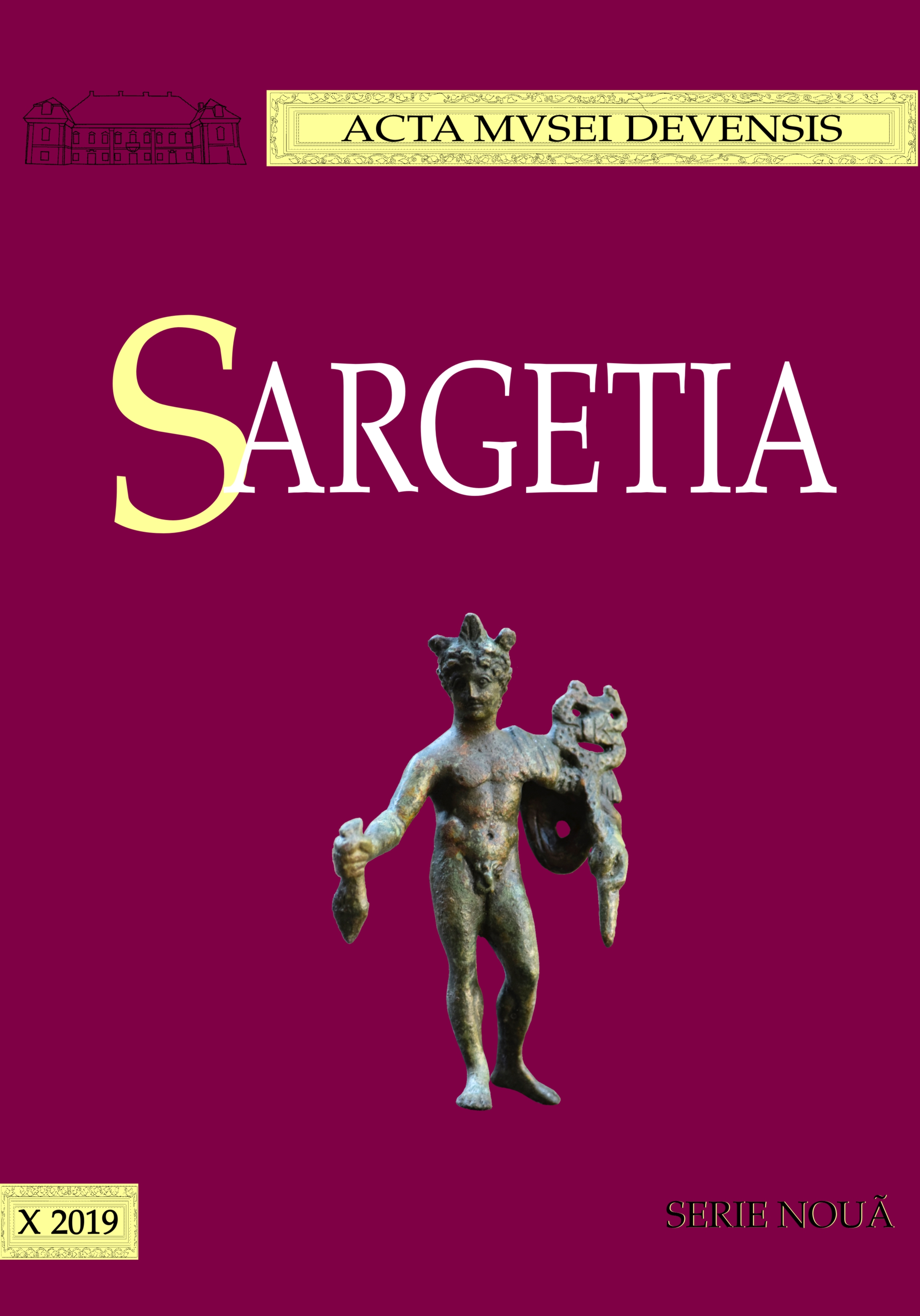Monumente funerare romane descoperite la Vețel, jud. Hunedoara
Roman Funerary Monuments Discovered at Vețel, Hunedoara County
Author(s): Oana Tutilă, Marius Gheorghe BarbuSubject(s): History, Archaeology
Published by: Editura Altip
Keywords: Roman period; Micia; funerary stela; funerary lion; stone carving workshop;
Summary/Abstract: The two monuments which form the subject of the present paper were accidentally discovered, in secondary position, at two different locations in the village of Vețel, Hunedoara County.One of the items is a fragment from a funerary stela (76 × 52 × 25 cm) (Fig. 1), made of red andesite from the Măgura Uroiului quarry. The artefact was recovered and introduced in the collection of the Museum of Deva (inv. no. 51393). Unfortunately, the monument’s state of preservation does not provide too much data. The inscription field is bordered by a frame. Inside, the lacunary text inscribed does not keep the name or age of the deceased female or the name of her husband who raised the monument. From the figurative field, two areas (panels) with human renderings are preserved: the dead female bust and the lower part of an Attis in the right part. We suppose that a similar mirror image was carved in a panel in the left side of the figurative register.The variant of this figured stela is unknown in the province of Dacia. The closest stelae in Dacia could be the types III B2 and III C2 at Lucia Țeposu-Marinescu and variant I2a from the typology made by Carmen Ciongradi. Anyway, other analogies for the divided registers of the figured field are four stelae coming from Pannonia Superior and Pannonia Inferior, which illustrate the bust of the deceased in an arch between or supported by two columns, or in a medallion. On each side of the central panel/medallion there are another two panels depicting human characters (Attis in three cases and a librarius and a servant in the fourth one).The second monument is a funerary lion (100 × 42 × 58 cm) (Fig. 3/1a-1b, 4/1a-1b), also made from the Uroi red andesite. Sadly, short time after it was seen, it was broken and reused when a pier was built. The lion lies on a half-column, to the right. The head is missing, but a part of the mane was kept on the neck of the feline and its strands are pictured as rhombs (pine cone shaped). A cattle head is rendered between the front paws of the lion.Far from being a piece of outstanding artistic quality, the andesite lion, as much as its fragmentary state allows us to appreciate, is a successful work, a product carefully executed, with concern for the correct rendering of anatomical details (the paws and sharp knuckles, the semi-open muzzle, with a well depicted dentition of the young calf).Certainly, these are two of the monuments that Micia was spoiled from over time and they must have been executed here. The stone carving workshop from Micia has been active from the middle of the 2nd century (or some years before) to the 3rd century, and it came to the fore not only for the variety of monuments produced, especially funerary ones, but also for some locally created decorative patterns (Medusa e.g.) or features of the human physiognomy.
Journal: Sargetia. Acta Musei Devensis
- Issue Year: 2019
- Issue No: 10
- Page Range: 63-75
- Page Count: 13
- Language: Romanian

